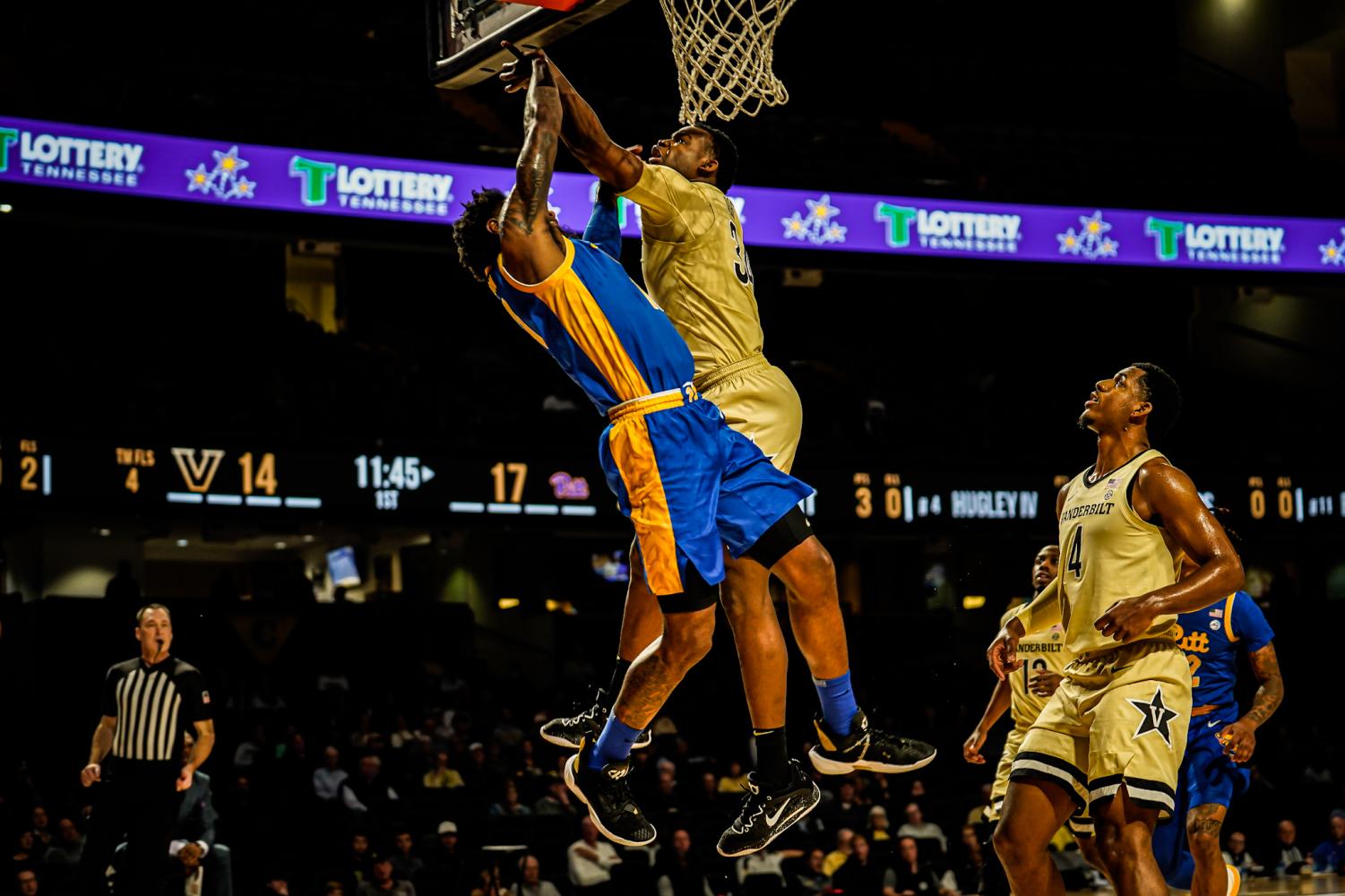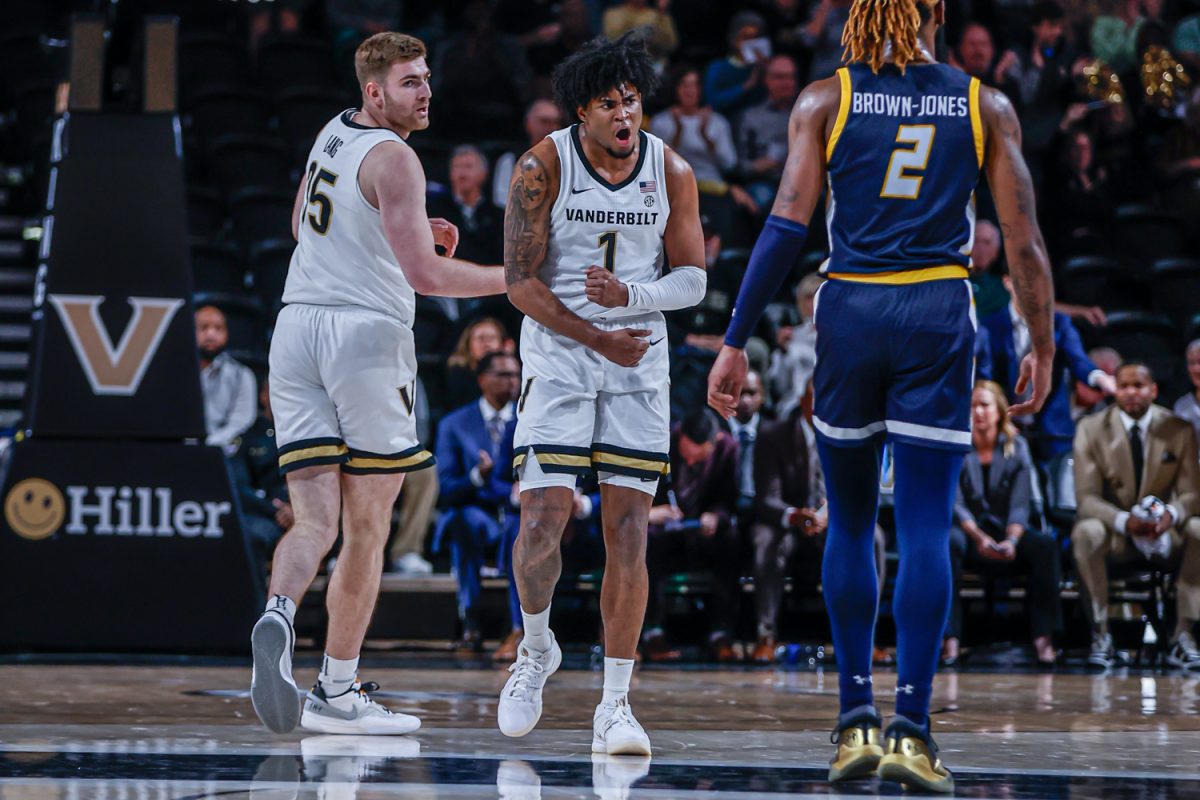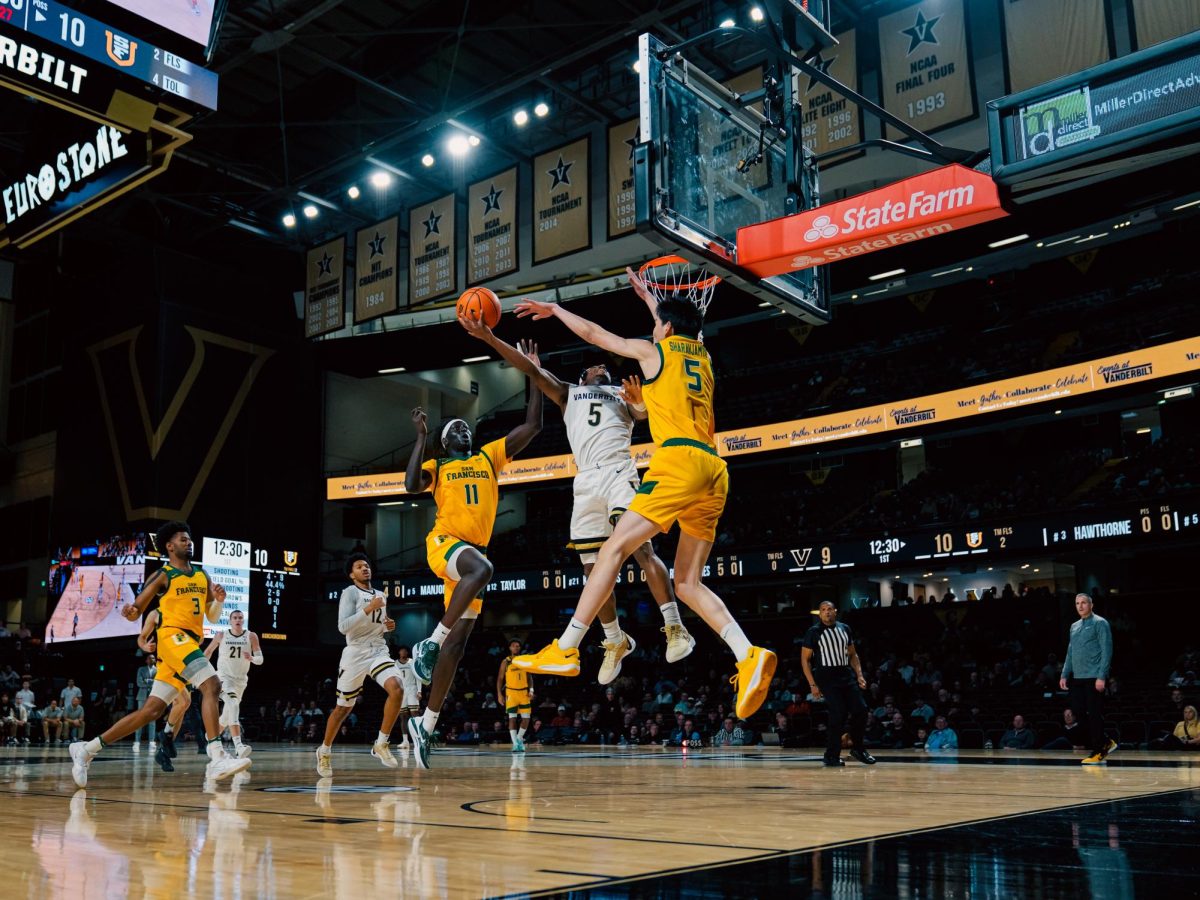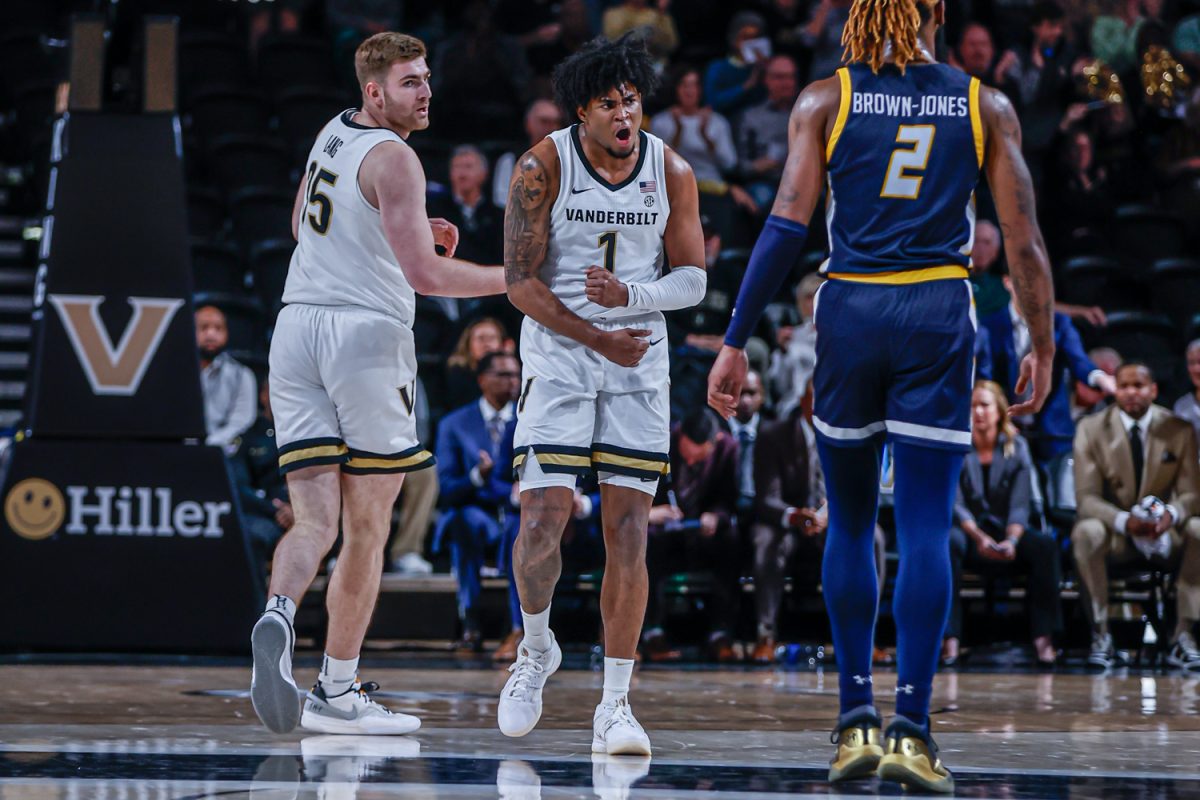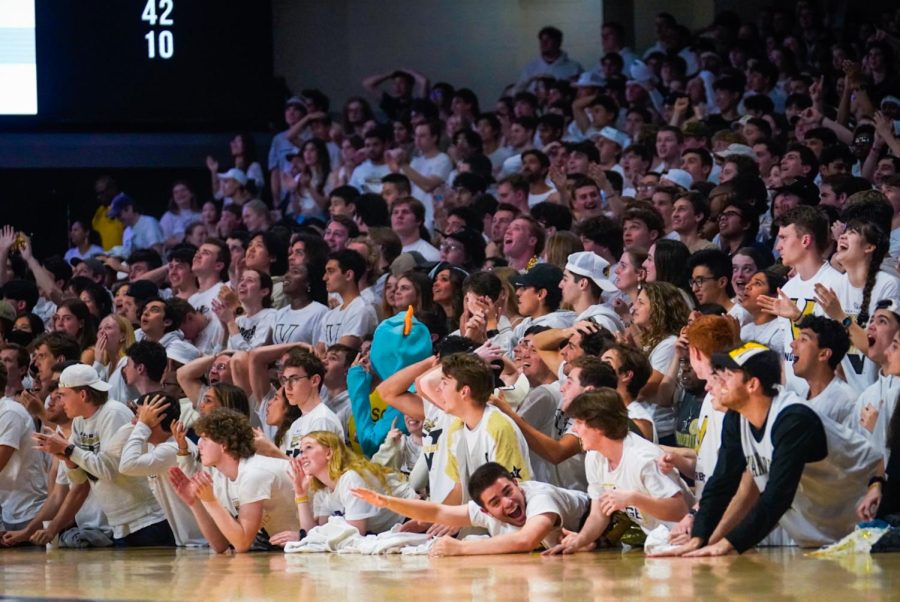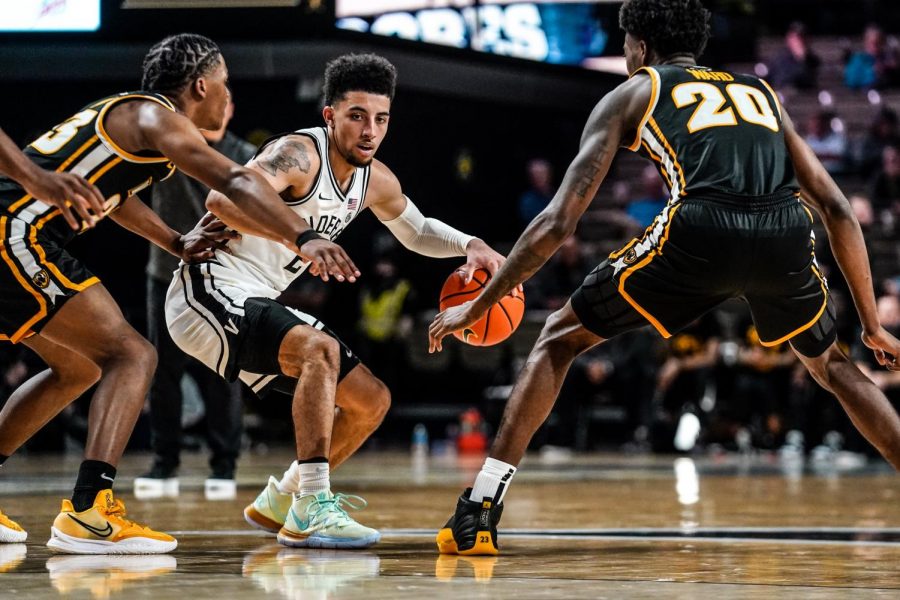As a basketball season progresses, certain things about a team usually begin to make themselves evident. After a month of basketball, it’s usually rather clear what a team’s ceiling is, who its go-to playmakers are and which players have carved out a spot in the rotation. Yet, since our last Memorial Minutes, it seems as if the answers to these questions for Vanderbilt have only gotten more confusing. Let’s dig in.
After its latest slate of games, Jerry Stackhouse’s squad sits at 5-5 as its non-conference schedule nears its end. The record itself is an indication that there’s no reason to panic about the squad’s future prospects, but it’s impossible not to consider what a confusing start it’s been for Vanderbilt—from ejections to strange rotations and everything in between.
Let’s start with the good: Vanderbilt was able to come away with two wins from their last three, taking down Wofford and Pittsburgh in home matchups. Despite late surges from their opponents in both games, the Commodores won two close games and showed the resiliency that’s often been questioned during Stackhouse’s tenure as head coach. As the team has all season, Vanderbilt relied on the performances of its veteran frontcourt duo of Liam Robbins (12.3 PPG, 2.7 BPG) and Myles Stute (12.1 PPG, 51.6 3PT%). Following an up-and-down opening slate of games, it seemed as if Vanderbilt had started to find a rhythm of sorts.
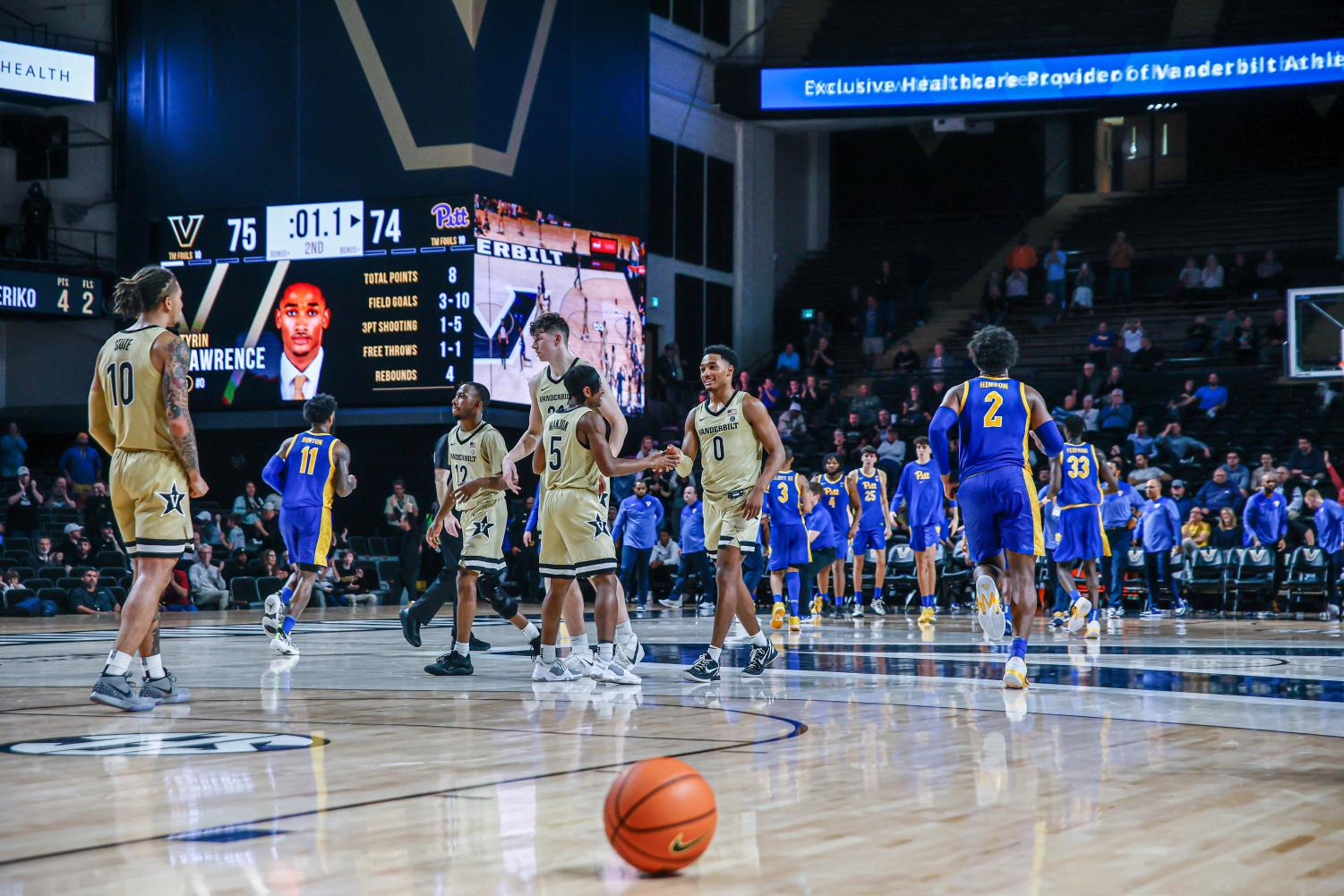
Then, the seemingly inevitable happened: The Commodores fell at home to SWAC’s Grambling State. Vanderbilt could not get much of anything going offensively without Jordan Wright (hip), and the result was a 19-turnover performance and defeat at the hands of a team positioned at No. 277 in KenPom. The matchup provided an opportunity for the Commodores to cushion their record before they head into the gauntlet that is SEC play. Instead, Stackhouse and fans alike were both left shaking their heads.
In a lot of ways, this three-game sample is representative of how the season’s gone so far: like a pendulum. For every thrilling win over Temple or Pittsburgh, it seems like there’s been a meltdown versus Southern Mississippi or ejection-fueled collapse at VCU. All season, it’s been one step forward and two steps backward for Stackhouse’s squad.
Let’s take a deeper look at what’s been behind the Commodores’ inconsistencies through the season’s first 10 games.
Broken backcourt
Coming into the season, it was rather apparent where Vanderbilt was going to struggle the most: replacing Scotty Pippen Jr.’s production. The now-Lakers guard was a two-time First Team All-SEC player at Vanderbilt and was the Commodores’ primary source of scoring and on-ball creation, averaging 20.4 points and 4.5 assists per game last season for the Black-and-Gold. Stackhouse decided to rely on an increase in production from his frontcourt veterans and replacements in the backcourt from the transfer portal and incoming freshmen to fill the void. Though the frontcourt, especially Robbins, has held up well so far, the latter part of that strategy has dropped the ball for Stackhouse.
In terms of immediate production, it was expected that guard Ezra Manjon would be able to provide a spark for the Commodores from the point guard position. Though in a weaker Big West conference, the transfer guard averaged 15 points and 3.4 assists per game at UC-Davis as a junior. For Vanderbilt, the bet was that Manjon would be able to maintain his scoring prowess even with more on-ball responsibilities.
Through 10 games, that bet looks to be a disaster, at least offensively. Looking at Manjon’s time at UC-Davis, it’s clear that he needs volume and control of an offense to find a scoring rhythm; Manjon took 14.3 shots per game last season, nearly as many as Pippen Jr. (14.9). With the surrounding talent of Robbins, Stute and Wright, Manjon has been forced to reduce his shot volume. Ten games into the season, he still has not been able to find a rhythm offensively. Despite the scoring difficulties, Manjon has been an active and scrappy defender while also being Vanderbilt’s best ball-handler, especially under pressure. Against Grambling State though, his offensive ineptitude outweighed those contributions, forcing him onto the bench for the final 12 minutes.
“It wasn’t Ezra’s best night. I just didn’t think he had a good rhythm going for us,” Stackhouse said of Manjon’s performance following Vanderbilt’s loss to Grambling State.
After going scoreless in Vanderbilt’s loss to Grambling State, Manjon is now down to 6.4 points per game despite averaging just under 30 minutes per game. Opposing defenders have capitalized on Manjon’s inability to shoot from deep (10.1 3PT% on one attempt per game). They’ve been keen to go under screens and clog the paint when Manjon checks in.
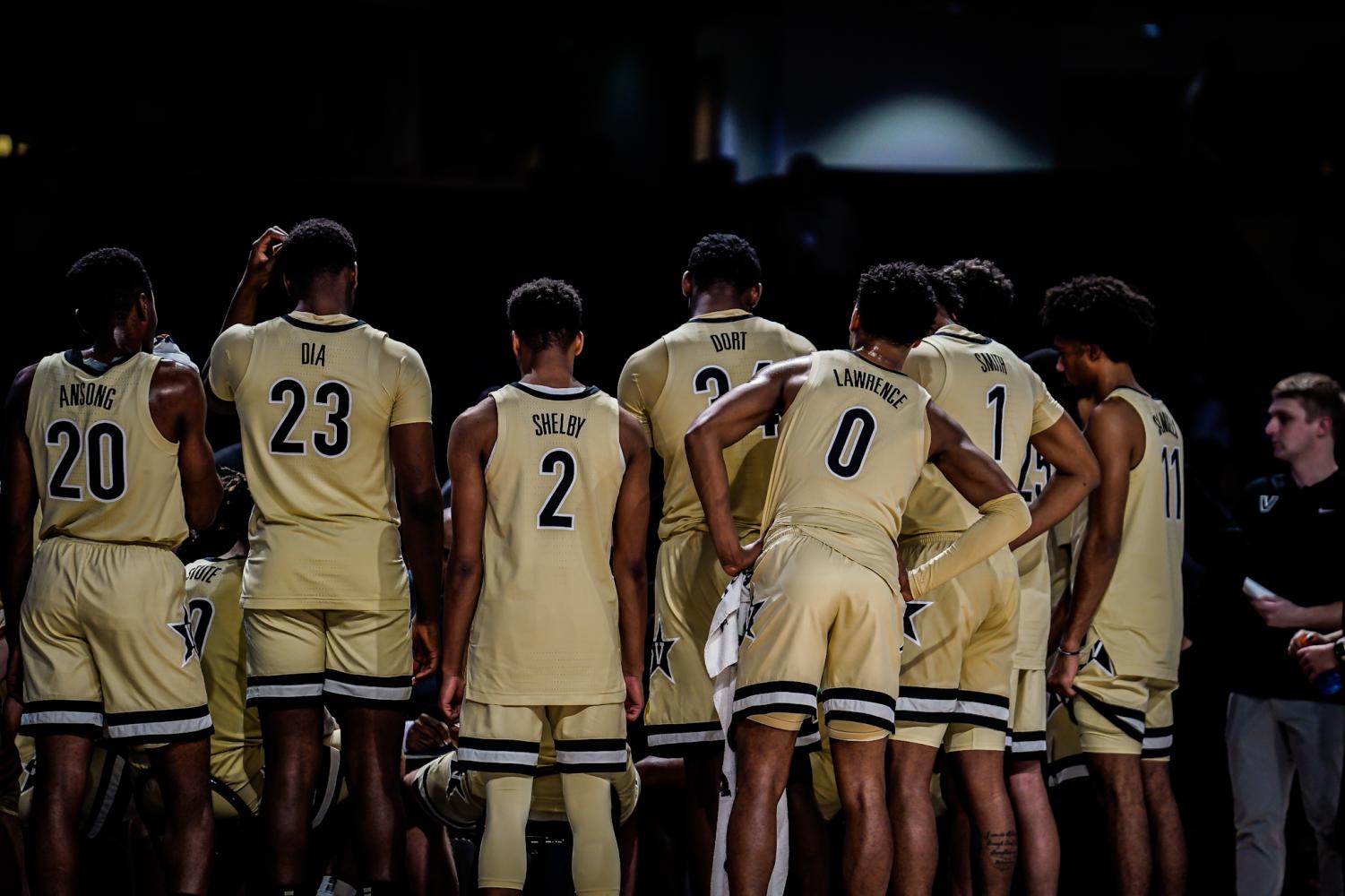
The effects of this defensive congestion can be seen in a few ways. For one, the Commodores rank No. 117 in offensive efficiency on KenPom, as they’ve been forced to settle for low-quality shots in the mid-range after stagnant possessions. In light of Manjon’s offensive struggles, Stackhouse has also been forced to play junior Trey Thomas out of position at the lead guard spot to supplement the offense. Though Thomas came into Vanderbilt as a combo-guard, his lack of experience at the point has shown with late turnovers and struggles dealing with the full-court press versus Pittsburgh and Grambling State. Finally, and perhaps most importantly, the offensive stagnation has reduced the effectiveness of Wright, who was extremely effective at getting to the paint last season but has seen a drop in PPG and 2P% from last year.
As Manjon may not be the team’s primary backcourt scorer as expected, it’s fair to wonder where Stackhouse could find scoring elsewhere. Junior guard Tyrin Lawrence has taken a jump this season, but he hasn’t yet developed the ball-handling capabilities of an on-ball lead guard. Freshman Paul Lewis has been sidelined for a large part of the season, but what about four-star recruit Noah Shelby? Despite being a prolific shooter in high school, Shelby has seen extremely limited playing time this season even with Vanderbilt being unable to find production from its backcourt. As SEC play nears, it would not be surprising to see Stackhouse experiment with different backcourt rotations as he looks to supplement the offensive threat of his frontcourt.
Rocky rotation
As the Commodores attempted to move forward in the post-Pippen Jr. era, a lot was made of Vanderbilt’s incoming freshman class. Headlined by Shelby, Dort and Colin Smith, it seemed as if the incoming recruits would have a real impact on a team looking to find a new identity. Through the season’s opening 10 games, we’ve learned nothing about how Stackhouse plans to use the freshmen this season.
Despite a limited showing in the season opener versus Memphis, Smith has shown flashes of becoming a good energy player off the bench. In Vanderbilt’s next game, the shocking loss to Southern Miss, Smith nearly had a double-double (9 points, 10 rebounds) in 27 minutes, showcasing a lot of promise as an athletic small forward. Since then, though, his minutes have varied significantly. Take, for example, his last three games: 23 minutes versus Wofford, just four minutes against Pittsburgh and then 24 minutes in Vanderbilt’s loss to Grambling State.
It seems as if Stackhouse has opted for the strategy of “riding the hot hand” with Smith. Though the strategy may be the most fruitful strictly on a game-to-game basis, it doesn’t seem as if Smith, or Vanderbilt for that matter, will benefit long-term from being plugged into the lineup at random points and being unable to find a rhythm through consistent minutes.
Compared with the other high-profile freshmen, though, Smith seems to have the best deal. Thus far, Dort and Shelby have hardly hit the floor, combining for just over 11 minutes per game. Dort’s exclusion from the rotation can be justified by looking at Vanderbilt’s depth in front of him: Robbins and Quentin Millora-Brown, two of Vanderbilt’s steadiest veterans. Shelby’s exclusion, however, seems to be a bit more puzzling.
Coming into Vanderbilt as a combo-guard, Shelby looked to be a spark-plug that could give the Commodores offensive production in a hurry. So far, Shelby has appeared in just 3 of Vanderbilt’s 10 games and has only played over 10 minutes once (Vanderbilt’s blowout win over Morehead State). What gives?
Given Shelby’s scoring capabilities and Vanderbilt’s backcourt production problems, it seems worthwhile for Stackhouse to give him opportunities down the stretch of the nonconference schedule to see what he has. Generally, it seems as if the Commodores could stand to benefit from consistency in their rotation—and that starts with Stackhouse’s decisions.
The caveat to this analysis is that Vanderbilt is just 10 games into its season. At this point, inconsistencies in the rotation seem bound to happen as Stackhouse and his staff try to figure out reliable combinations. However, it still seems that giving his newcomers some room to run could be fruitful by the time SEC play comes around.
Eyes ahead
It’s been a rollercoaster of a start to the season, but the Commodores still have a long way to go. As conference play draws nearer, though, it’s important that Vanderbilt begins to tighten up its early inconsistencies, whether it be rotations or otherwise. Vanderbilt will have a few opportunities before the new year to work out the kinks.
After a short break for finals, the Commodores will return to action in a tough matchup with NC State (No. 56 in KenPom). It will be one of Vanderbilt’s toughest games this season but also has the potential to be a resume-booster if the Commodores are able to pull off a win coming out of an extended break.
Vanderbilt will then return home for two lighter matchups against Alabama A&M (No. 328) and Southeastern Louisiana (No. 293). Seeing how this season has gone so far, though, we know that victories in those games are far from givens.


